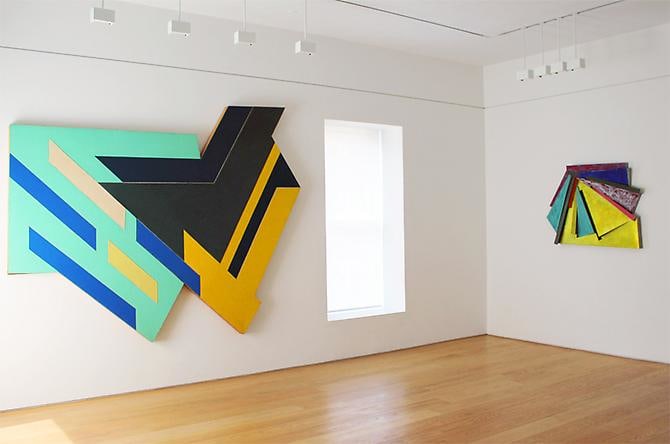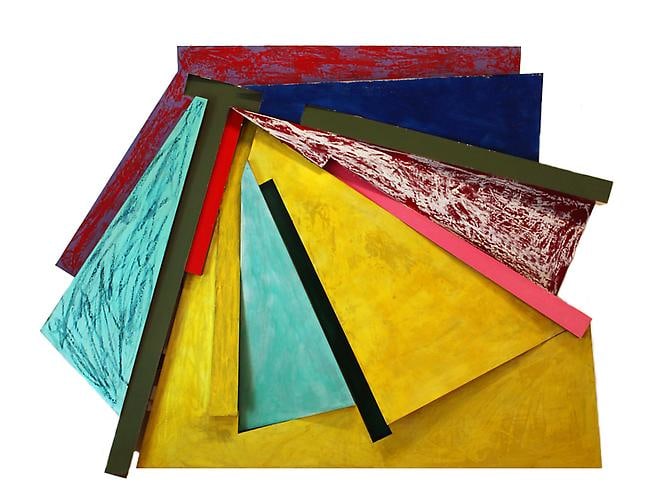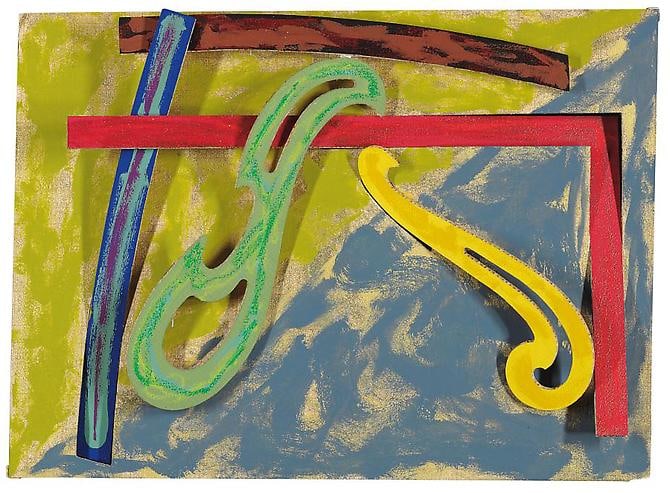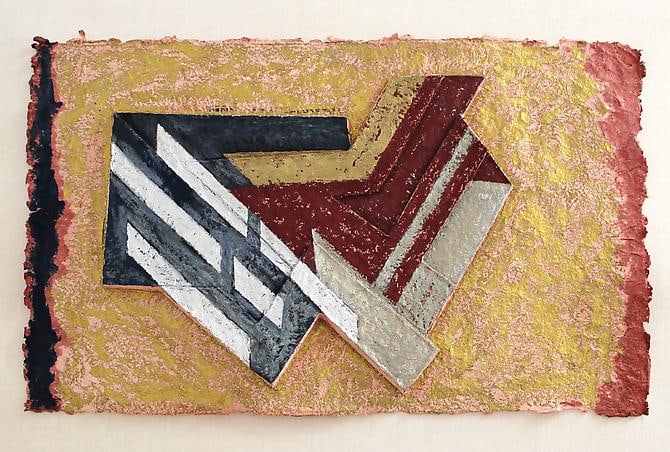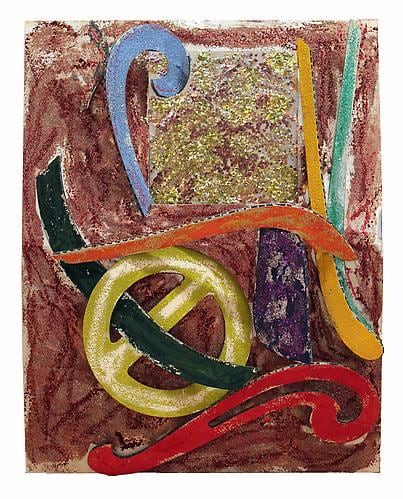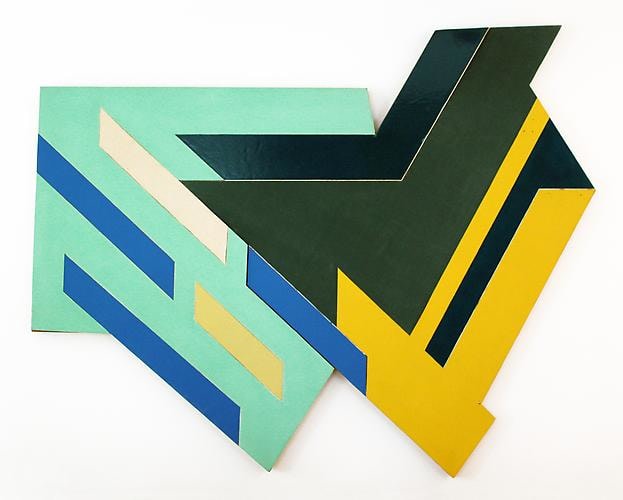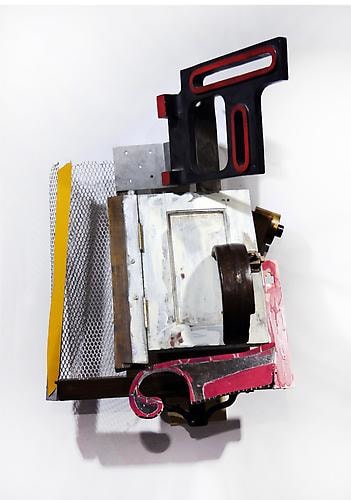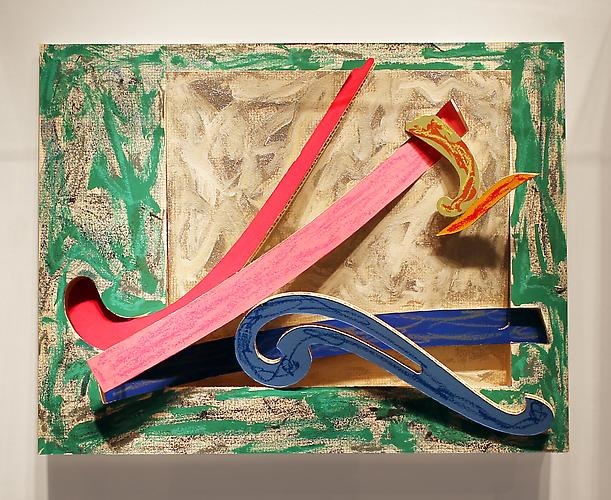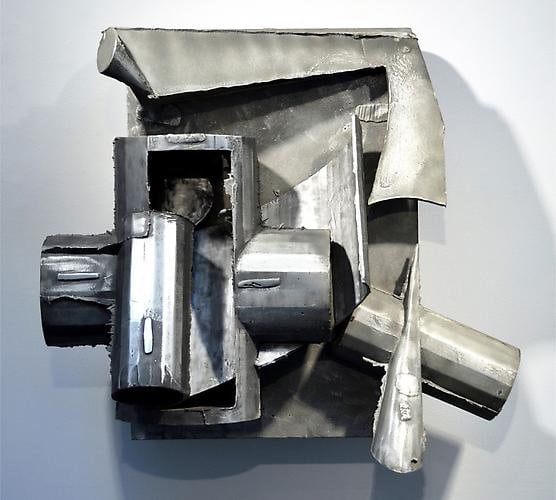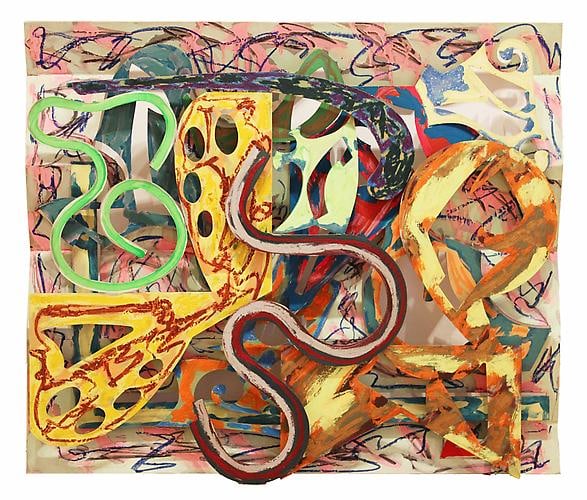A selection of works by Frank Stella from 1971 to 1987 will be on view at Leslie Feely from May 8 to June 27, 2014. This exhibition will explore the artists’ departure from flat, freehand drawings towards a more mechanical interpretation of irregular curves such as those used by engineers and architectural draftsmen.
Included in this exhibition is Bogoria I (1971), a large rare collage on canvas from the Polish Village series. The flat surface of this collage is broken into discrete fields, each distinguished by color and surface material: felt, cloth, and painted acrylic. These elements have been mounted onto corrugated cardboard, which was then mounted onto a wooden support. Named after a series of 17th, 18th and 19th century wooden synagogues destroyed by the Nazis, the Polish Village series demonstrates Stella’s increased interest in contemporary links to Cubism and Constructivism.
“I was able to use my gift for structure with something that modernism hadn’t really exploited before, the idea that paintings could be constructed, made by picture-building…Building a picture was something natural for me. Build it and then paint it. It was a job I was well suited for.”
– Frank Stella quoted in William Rubin ed. Frank Stella: 1970-1987 (New York, 1987), p. 40.
Also included in this exhibition is Maquette I for Montenegro (1975) on aluminum from the Brazilian series. The first all metal series signals Stella’s measured departure from collage to more manufactured planes. The restricted compartments of singularly painted elements explore the artists’ interpretation of the inter-play between color and spatial relations.
Talladega (1980-81) on aluminum from the Circuit series merges painting and sculpture into brightly colored three-dimensional constructions of linear elements evoking the curves and speed of winding racetracks. Named after cities known for automobile races, this series follows a more open and free-form approach extending outward and occupying more of the viewer’s space than in the previous Brazilian and Exotic Bird series, also on view.
For more information please visit www.lesliefeely.com or contact gallery@lesliefeely.com 212-988-0040

